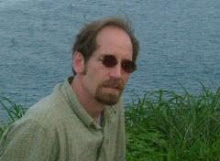2-28 Day in Taiwan: Truth & Reconciliation?

Ex-prez Bill Clinton visited Taiwan yesterday, getting paid for one speech more $ than I will earn in Taiwan for over 10 years of speeches. But I suppose that his speeches are a lot easier on the ears than mine. Also as a speaker, I have no "aura".
By the way, it's comforting to see that someone can earn so much after retirement, since I recently found out that I will get neither a pension nor social security upon my retirement. I will have to go gently into that good night at age 65. If my body isn't ready to give up, I will have to persuade it. I'm told that hunger and exposure will do it, albeit at an excruciatingly slow pace.
But enough about Me. What's the special occasion today in Taiwan?

During the 228 Uprising, a crowd of angry Taiwanese confronted the KMT government in Taipei.
The occasion is the annual "228 Memorial Day" -- numbers standing for February 28th, 1947 technically -- a tragic history of political violence in Taiwan. It is a first step toward justice for the tens of thousands of victims of that period and the ensuing "White Terror" {白色恐怖} period. The public at large of "old Taiwanese" rose up against the incredible corruption and abuse of the "new Taiwanese" military government of the KMT back then. Thousands of educated elites were drowned in the rivers, or simply shot on the spot. Crowds of civilians and school students were also randomly chased and shot at by KMT soldiers, under orders of Chiang Kai-shek and his provincial governor. In the ensuing martial law over the next couple of decades, suspected dissidents were hunted down and executed, or imprisoned on Green Island, or exiled. A gigantic brain drain that stupified Taiwan for a whole generation during a dark time of fear and repression.
A deeper trend associated with this colonization period is that positions of power in law, media, business, and education were systematically taken away from the old Taiwanese group and given exclusively to the new Taiwanese group. This segregation has left Taiwan with a dull hangover today, where many institutions are now more open and fair, yet the old imbalance and prejudices linger. Hardly a week goes by that I don't overhear some comment that clearly reveals this hangover of prejudice and tension. Much of it amounts to a denial of what Taiwanese history has wrought on today's social formation. Those who gained from that history believe that it should be forgotten and forgiven; while those who lost believe that forgiveness will only follow acknowledgement of what might be forgiven -- not to mention the establishment of justice today. And that has barely begun. Not even one person was brought to justice for the murders of those decades. Land, businesses, and power that was taken by the KMT authorities has not been recompensated.
The effect of these decades lingers in Taiwan even today after its rapid liberalization -- authoritarian attitudes among some government bureaucrats, censorship in the public school curriculum, and public pressure to keep quiet about the ethnic tensions this period created. Statues and even a monument of Chiang Kai-shek remain firmly in place -- two of them on my campus. Taiwan did not follow the rest of the world in 1989 to knock down the statues of the Leninist dictators in so many countries. Moreover to this day, the educated elite in the city of Taipei are mostly from the "new Taiwanese" group, and the lesser educated nonelite class of the southern provinces are mostly the old Taiwanese group. There is a certain % of exceptions, but they prove the overall rule. Clear alignments of political identification follow this tension. Most of the elite in Taipei city do not want to even mark the annual 228 Day.
My university students say that of course they know what 228 was. But when asked, they repeat only the event that sparked riots on that day, as if the real meaning is simply an unfortunate incident between a policeman and a street vendor! When asked what followed for the next few months, and about the White Terror decades, they express confusion and ignorance. How many people were killed? They aren't sure: 7 or 70,000? Who killed them? Some kind of fighting --not so clear. How many people were imprisoned and for how many years? Again, they have no idea. Why did cities around Taiwan erupt in mass protests? Don't know. Who ordered the soldiers to open fire on schoolchildren? They did!?? What's the title of a poem, novel, or movie about that period? Don't know. Etc... It isn't my students' fault though. Public education did not cover Taiwanese history, much less this stuff.
In other words, we cannot begin to think about establishing trust and justice today, since there has not yet arrived the moment of truth. "Truth & Reconciliation" was the path chosen in places like South Africa after apartheid fell, or even to an extent in Cambodia after Pol Pot fell, or perhaps soon in Spain about the fascist opression under Franco if we can believe the news. Taiwan is struggling to arrive at that kind of historical consciousness of its own truth. Reconciliation cannot arrive beforehand, since this is a relationship of cause and effect. Truth will lead to justice, not the other way around.
To any of my students accidentally reading this, I hope you had a nice day off today. Now follow the links below in order to answer those questions above.
- http://www.studentorg.umd.edu/tsa/Eng/History.html
- http://www.etaiwannews.com/Viewpoint/2001/02/28/983327829.htm
- http://www.answers.com/topic/228-incident



0 Comments:
Post a Comment
<< Home